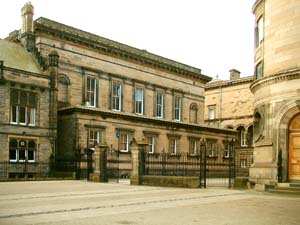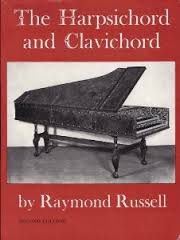Behind the scenes at the museum

In a companion post to Chris Lewis’s blog on the Making of the Modern Harpsichord, PhD student Kate Hawnt writes about her own research for the project : Good morning from St Cecilia’s Hall, Edinburgh. I am currently sitting in the Green Room of the Museum of Musical Instruments taking stock of the past day’s work. My research brings me up to Scotland for a second trip to sift through the archives of the Russell Collection – one of the world’s most famous historical keyboard collections, donated by Maud Russell. This collection was painstakingly put together over many years by Raymond Russell, Maud’s son, who bought important and valuable instruments from all over the world, bringing them to his homes in London and Mottisfont. It was given to the University of Edinburgh in 1968, along with the funds to restore a building to house the instruments for students, performers and instrument builders to ‘get their hands on’, and be available for practice, making measurements for copies and viewing examples of instruments in chronological order. It must be one of the earliest places opened specifically to make such important items of music history readily available for study and public viewing.

So what am I doing here? Kate Hawnt, a singer by trade, surrounded by harpsichords (pianos, bagpipes and some weird and wonderful instruments I couldn’t put a name to)… Well, having been lucky enough to gain the position of PhD researcher on the AHRC-funded ‘The Making of the Modern Harpsichord’ project (a project aiming to document and historicise the revival of the instrument in the 20th century), my first research goal has been to try and discover every single little detail about the life and work of Raymond Russell. I want to establish his actions as a collector and advocate of the harpsichord, and how he might have influenced the revival of the instrument and early music itself.
 One might safely assume that – his collection now being housed in Edinburgh – there ought to be a significant amount of useful information attached to it. However, on speaking to current and past staff working on the collection in order to prepare for my first trip, it seemed that the information about Russell, other than his instrument notes, was scant. My brief trip in April would surely be more than enough time to cover everything… Au contraire! (Bet you saw this coming, particularly those experienced with archival work). After meeting the wonderfully knowledgeable John Raymond, the current Assistant Curator, who kindly handed me two archive boxes full of important information, we quickly discovered there were at least another ten boxes containing items of interest: instrument notes, receipts of purchase, personal letters, even documents referring to Russell’s career as an historian of surgery! It turns out Mr Raymond Russell was an exceptional polymath, not only an expert in keyboard instruments but also on historic surgical instruments, zoology and the fortifications of the island of Malta. It became very clear that another visit was needed, hence my current trip. Of course, having arrived in Edinburgh to investigate my previous findings, I unearthed far more than I’d expected. I also met many more helpful and generous people who will be most valuable to my ongoing work. I will clearly need another visit.
One might safely assume that – his collection now being housed in Edinburgh – there ought to be a significant amount of useful information attached to it. However, on speaking to current and past staff working on the collection in order to prepare for my first trip, it seemed that the information about Russell, other than his instrument notes, was scant. My brief trip in April would surely be more than enough time to cover everything… Au contraire! (Bet you saw this coming, particularly those experienced with archival work). After meeting the wonderfully knowledgeable John Raymond, the current Assistant Curator, who kindly handed me two archive boxes full of important information, we quickly discovered there were at least another ten boxes containing items of interest: instrument notes, receipts of purchase, personal letters, even documents referring to Russell’s career as an historian of surgery! It turns out Mr Raymond Russell was an exceptional polymath, not only an expert in keyboard instruments but also on historic surgical instruments, zoology and the fortifications of the island of Malta. It became very clear that another visit was needed, hence my current trip. Of course, having arrived in Edinburgh to investigate my previous findings, I unearthed far more than I’d expected. I also met many more helpful and generous people who will be most valuable to my ongoing work. I will clearly need another visit.
All in all a wonderfully informative and productive trip. Mr Raymond Russell is proving to be an intriguing and colourful character and I’m looking forward to my next research trip, to the archives at Eton, to see what else I can dig up!

